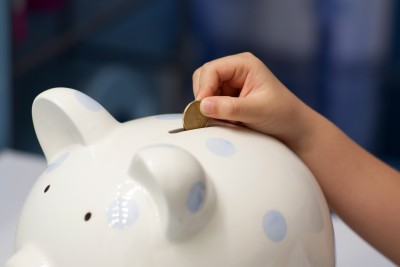Over the last few years, more and more families and individuals have been facing serious financial hardships, which have often stood in the way of their efforts to pay off debt and save money at the same time. Fortunately, there are ways you can regain your financial independence and still manage to save up some money for an emergency, a down payment on a house, or a family vacation.
The key to being able to pay off debt and save money stands in embracing a more financially responsible lifestyle. Follow these seven steps to get started.
Make a budget. The first step is to create a budget to identify your income and your expenses. Essentially, your expenses cannot exceed your income.
Your budget should follow the 50/30/20 rule – 50 per cent of your income should go towards needs (i.e. housing, food, bills, etc.), 30 per cent to wants and 20 per cent to savings and debt. Be realistic with your budget. If you don’t apply any money to clothing or entertainment, you’re going to fail. It’s like going on a diet and never allowing yourself any indulgences. You have to set some money aside for the fun things in life – just don’t go overboard.
If you can’t balance your budget or have no money set aside for savings, see if there’s anywhere you can realistically cut back. For example, can you cancel a $50 cable bill and replace it with a $10 streaming service? Every penny counts! If you can’t cut back, can you increase your income?
Start an emergency fund. Even before you start saving for a holiday or a car, you want to focus on saving for emergencies. Having an emergency fund in place will ensure that when you do have unexpected expenses, such as a car repair, you won’t have to rely on credit to pay for it. As a result, your debt-load will not grow because you will have the money to pay for things that come up unexpectedly. A good rule of thumb is three to six months’ worth of living expenses.
Pay yourself first. Even if you have a lot of debt, you should still put aside something for yourself. Seeing your savings account grow will give you confidence, and furthermore, if you invest your savings in a TFSA you have the ability to grow it further through investments. Set up automated payments to transfer a portion of your paycheque into your savings account the minute you get paid, so you won’t have an opportunity to spend it.
Pay down high-interest debt first. If you have credit cards, make a point to pay them down first. Credit cards carry a high-interest rate of around 19 or 20 per cent. Be aggressive and put most of your debt repayments to these high-interest loans, and only pay the minimum payment on lower-interest loans, such as lines of credits or student loans. Make sure you are at least paying the minimum payment on all your loans to ensure your credit score isn’t impacted.
Consider consolidating loans. Oftentimes, your bank can help you consolidate all of your debts into one low-interest loan. Sometimes it’s easier to keep track of debt if it’s all in one place. Furthermore, lower interest rates mean you’ll pay less in the long run and put more money towards the principal. Some credit cards also offer promotional offers where you can transfer the balance of an existing card to a new card and pay no interest for up to a year. This is a great way to chip away at debt, assuming you’re able to pay the bulk of it off before their promotional period runs out.
Make extra money. It sounds simple, but realistically the only way to put more money into savings and debt is to have more money. Have a garage sale and sell unused belongings, find a side hustle or stash away money you receive as gifts. If you use every opportunity that you get more money to pay down debt and/or put it into savings, you’ll be on your way to debt freedom in no time.
Cut down expenses. Sometimes it seems impossible to cut down expenses, but if you’re serious about paying down debt and saving at the same time, you’ll need to make sacrifices. If you remember that these cutbacks will only last until your debt is paid off, you can use that as motivation. Once your debt is paid off, you will have more money to spend on things you want and to save for your goals. Here are some ideas on how to cut back on expenses:
- Forget about shopping for clothes and other indulgences that you don’t really need. You can make do with the clothing you already own. This can save you a lot of money over the course of a year.
- Prepare your own lunch at home and don’t be tempted by eating out or ordering lunch at the office. Instead of $10 lunches, save that money by making your own. This alone can save you up to $200 a month, or roughly $2400 per year.
- Going out for entertainment can be fun, but it often means unnecessary costs. When you are struggling to pay off debt, you need to make your life easier and reduce your costs wherever possible. Therefore, you must consider giving up such expensive habits of dining out or going out with your friends. You can invite your friends over and enjoy the time you spend together in your own home without having to spend hundreds of dollars.
- Do you really need all your magazine and newspaper subscriptions? Do you really need two phones? Do you ever have the time to enjoy all your TV programs? If the answers to these questions are “no, not really” then you know what you have to do. These things that you don’t really need add up to your monthly costs and often prevent you from taking the right steps to pay off debt.
- It’s incredible how much food people throw away because they are not properly planning their menu and budgeting their grocery bill. It only takes a little organizing and you can easily cut off thousands of dollars every year from your groceries alone. Plan carefully and you’ll avoid throwing out food just because it’s gone bad.
If you need help paying down debt or saving, contact one of our credit counsellors for a free consultation. We can help you develop a budget that allows you to manage your debt and save money at the same time.






